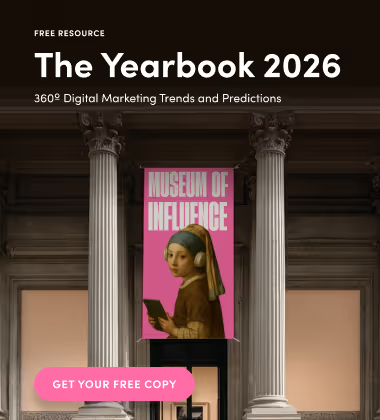Presenting a company, product, business plan, or project to whom you want to persuade to invest resources in is a challenging task. You want to provide all the information, tell stories, and present data, but there's not enough time for that. In these situations, having the best pitch deck is critical to effective communication and may determine whether investors trust your plan or not.
A pitch deck is a presentation to attract investors to a business. It should be comprehensive enough to present your company history, model, development, the specific project you want to fundraise, and the market size you are targeting.
Quite a bit for a presentation, isn't it? If you want to know how to grab your audience's attention and deliver information in a memorable, easy-to-understand way, check out the tips below.
Tell Your Story in a Visual Timeline
A good practice is to keep your pitch deck up to 20 slides long, as everybody has limited attention spans, especially investors who analyze many proposals every week. Using visuals is a great way to condense large amounts of information in an engaging way and avoid wordy slides.
Visuals also makes it easier to understand the most important points quickly, and if you want to tell your company's story, present milestones, business evolution, and what you plan to achieve in the future, using timeline infographics is the best option.
Timelines are great for storytelling, and it helps you provide your audience with the big picture of events, tasks, and goals. See how you can use a timeline to show progress over time:

Use Infographics to Introduce Your Team
Using visuals to introduce the project's key players helps investors better understand whom they should trust their resources. Do this in a single slide, using photos of your team and make a quick presentation and highlight the most important people, as in the example below:

Besides presenting departments, an organizational chart reflects a company's culture and values, like diversity, through design. This kind of chart highlights how teams are organized and the relationships across the organization. By doing this, you help investors see the talent and expertise that backs your company, an excellent way to reassure that their resources are in good hands. See the example below:
Comparison Infographics
When finally presenting your project, it is time to show why your product or service is better than your competitors and how it stands out from the crowd. Choosing the right visuals can make a significant impact and help you to make your point quickly.
For example, this comparison infographic below, which presents the advantages that an organic food company has over producers who use more conventional methods, in addition to presenting the differences between the processes attractively and simply:

Present Market Statistics
Using charts is a great way to present statistics, market sizes, and the market share your company occupies now and intends to occupy in the future in your specific niche. And this is one of the main aspects that investors are focused on, as a small market can mean a low ROI. So the goal is to persuade the client that you are about to enter a market with great opportunities, as in this presentation slide:

Statistics support arguments and presentations and show that you have reliable information on the subject. If you present statistics attractively, people will be more likely to pay attention to your data and value your material.
You can use charts to show the size of the market or its growth over a given period, and you'd better do this in one or a few slides, as was done in this graph:

Create Visual Personas
Helping your audience understand how customers use your product or who would be the ideal customer is a key part of building trust in your project. Creating a persona will help stakeholders understand your customers' background, income, and needs. And the more information they have, the more likely to decide in favour of your business they will be. An interesting way to do this during a presentation is to use visuals to represent your persona.
Personas should seem as natural as possible to your audience. If personas are overly idealized, they will make your project look like a school presentation. One way to avoid this is to craft a visual representation with a persona maker. You can use an infographic that brings together a photo, tables, and indexes to pinpoint levels of each personality aspect, such as extroverted vs. introverted or rational vs. intuitive. This will ensure that she is not described as just analytical or introverted and will give a credible idea of how much she also has the opposite trait.
It is interesting to merge this data with demographic information, hobbies, and personal tastes, as in the example below:

Choose a Consistent Theme
When using the various resources available, you must maintain the identity of your presentation. The first thing is to choose a consistent theme and stick with it throughout the pitch deck. On the other hand, sometimes it may be a good idea to change themes and create contrast.
Start by setting the theme of your presentation's background image. If you choose to do this using a colour for the background, that is a simple task. Choose it according to your company voice, and take the scannability of the material into account. Suppose you intend to use photos for your backgrounds. In that case, it is essential to be careful to choose images that have a similar colour palette, to give unity to your material in the variety of elements that compose it.
Take away: You can rely on free templates to create a professional pitch deck you can easily edit, changing the colour scheme, text, icons, and photos. And if you need inspiration, here are 30 excellent pitch deck examples from diverse industries worldwide.



